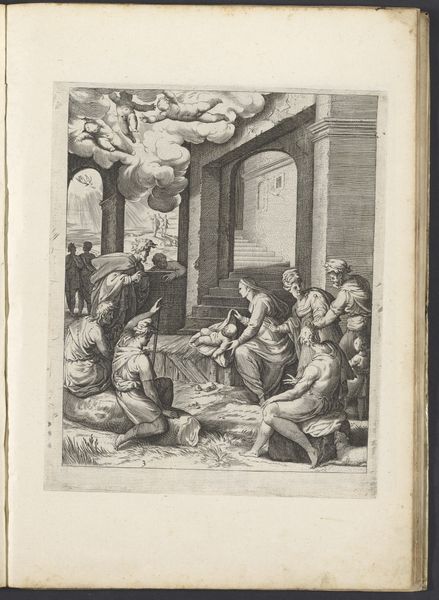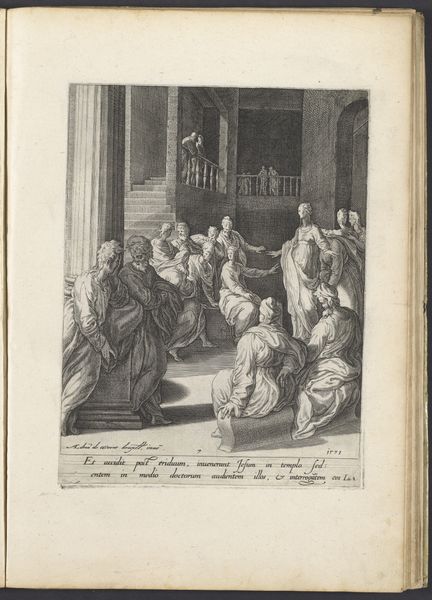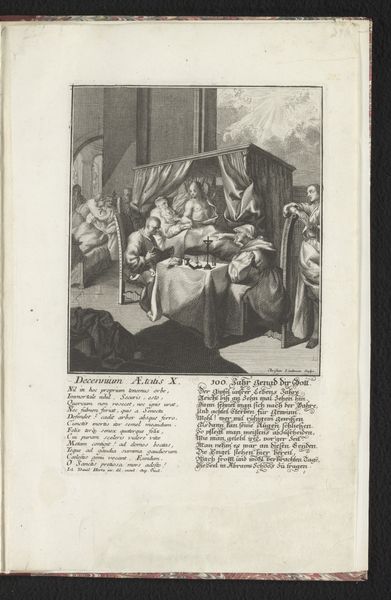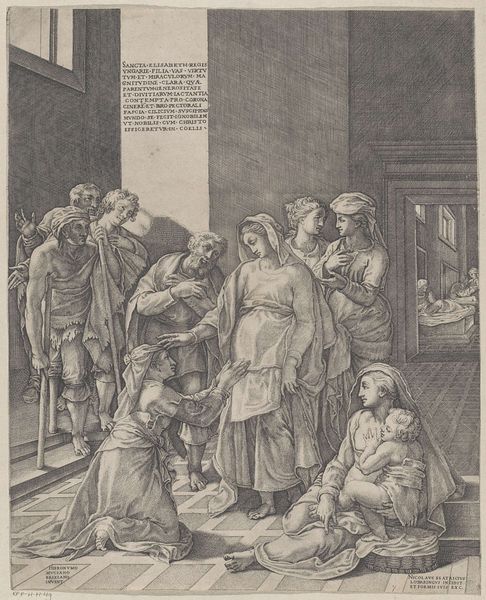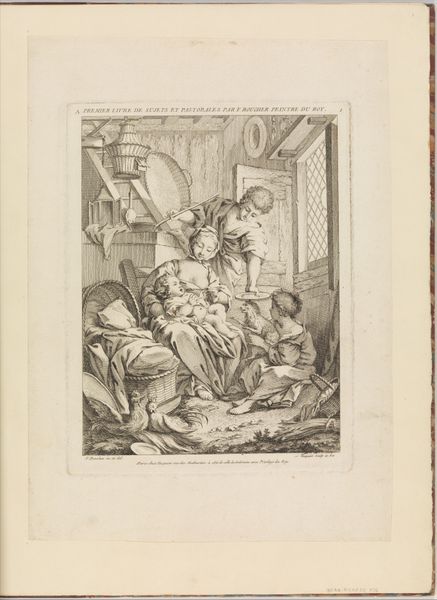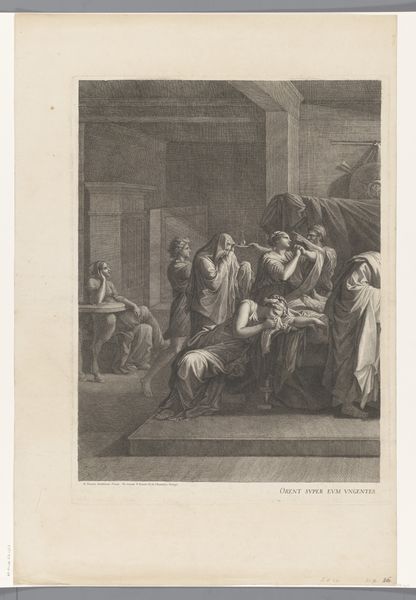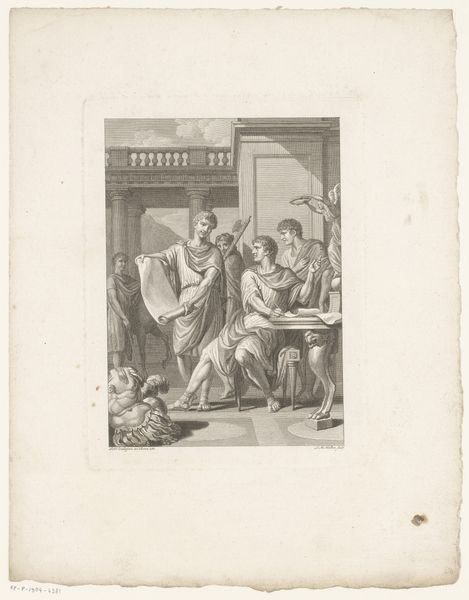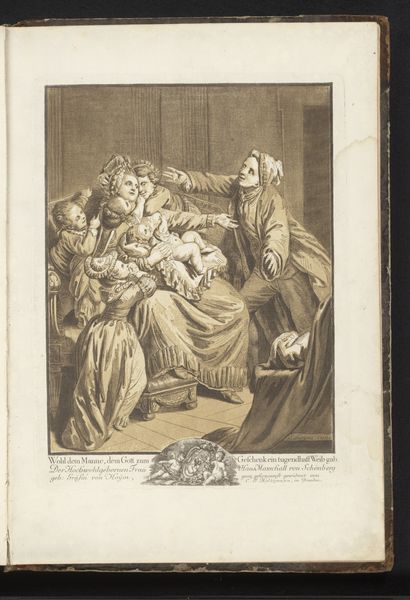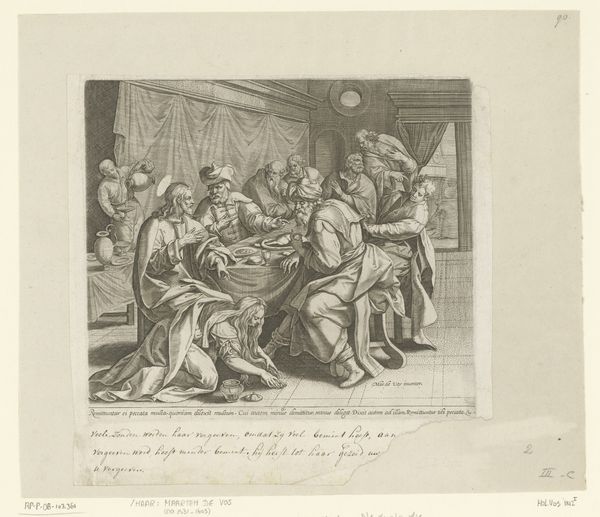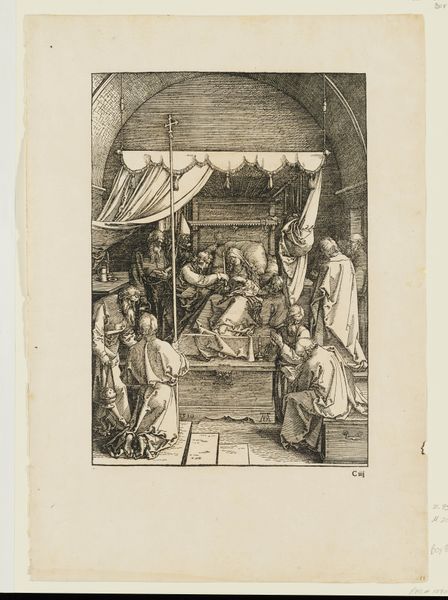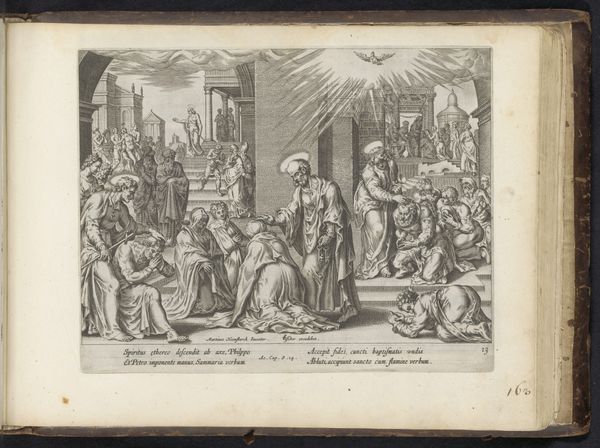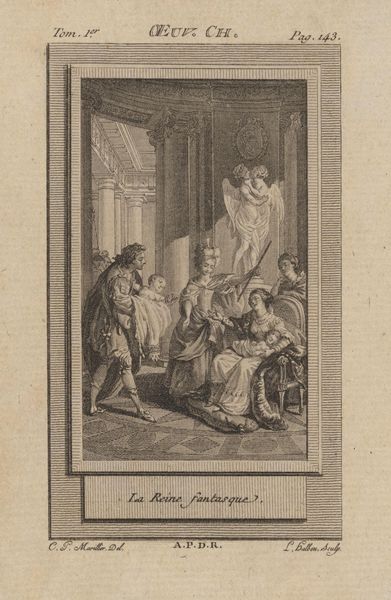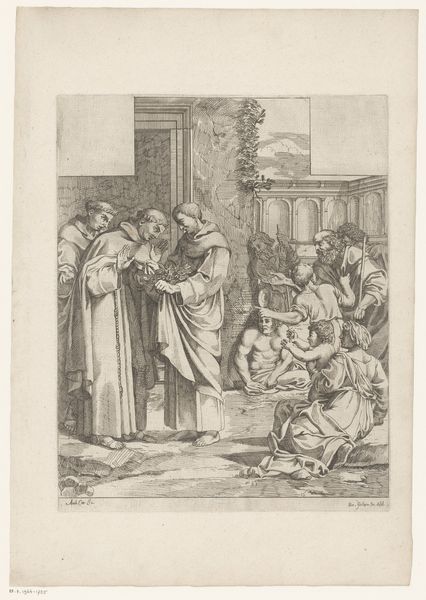
print, paper, engraving
#
narrative-art
# print
#
mannerism
#
figuration
#
paper
#
11_renaissance
#
coloured pencil
#
history-painting
#
engraving
Dimensions: height 266 mm, width 220 mm
Copyright: Rijks Museum: Open Domain
Curator: Today we’re examining Isaac Duchemin’s engraving, "Adoration of the Magi," dating back to 1573. Editor: Right, my first impression is…crowded. Everyone's packed into this small space, which sort of adds to the sense of wonder, don't you think? All those faces and gestures, all converging on this one miraculous event. Curator: Indeed. The composition, while bustling, is carefully structured. Note the Mannerist elongation of the figures and their exaggerated poses. It is as though emotional fervor reshapes physical forms. Editor: Exaggerated is a kind word. It's almost theatrical, like a Renaissance stage production, all dramatic lighting and costumes—except here, it's masterful lines carved into paper. There is an intensity in those bowed heads and outstretched hands. It makes me think about what they’re really offering: not just gold and frankincense, but also vulnerability and faith. Curator: Precisely. The inscription visible below the image references Matthew 2, underlining the source material and imbuing the print with textual authority. Consider, also, how Duchemin's medium—printmaking—allowed for the widespread dissemination of religious narratives during this era. The lines almost vibrate with religious intensity, don’t you think? Editor: Absolutely. This wasn’t just art; it was accessible theology. You’ve got the textures created just by layering all those thin lines that bring out depth and volume. It looks like it’s aged really well over time. If you consider that there were few coloured prints available in this era, it makes you question what would we have experienced visually as patrons of that time. What stories were shared as they viewed the art in person? I imagine each print became something new as it was further shared over time. Curator: A fruitful point. Duchemin's manipulation of line and form here provides fertile ground for contemplating not only the Adoration narrative, but the cultural function of the image itself in early modern Europe. Editor: It feels like we’ve just cracked open a time capsule filled with devotion and artistic ambition.
Comments
No comments
Be the first to comment and join the conversation on the ultimate creative platform.
